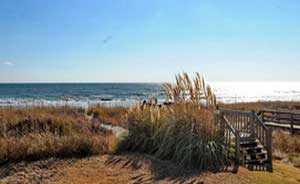Myrtle Beach Weather
Sixty miles of beaches and marsh and river and creeks, maritime forests, gardens and state parks, make the Grand Strand a veritable wonderland of things to see and do. The area welcomes more than fourteen million families, golfers, couples and snowbirds every year to enjoy sand, surf and the warm southern climate. Mild temperatures and gentle ocean breezes make the greater Myrtle Beach area an ideal vacation destination any time of the year.
For decades, peak vacation months were – and probably still are – June, July and August. But over the years, Myrtle Beach and surrounding communities have transformed into much more of a year-round vacation destination. During the “shoulder seasons” when the crowds are lighter, countless vacationers have discovered more enjoyable temperatures – and there’s still plenty to do.
Annual Weather Statistical Averages*
Water and air temperatures based on thirty years of data from the SC State Climate Office
| Sunny Days | 215 |
| Overcast Days | 150 |
| Frost Days | 42 |
| Days when maximum temperature is more than 90 degrees | 40 |
| Days with .10 inches of rain or more | 77 |
| Number of sunny days during an average summer month | 18 |
| Number of sunny days during an average winter month | 15 |
| Wettest months | Aug. & Sep. |
| Driest months | Apr. & Nov. |
| Hottest day (105 degrees F) | Aug. 22, 1983 |
| Coldest day (4 degrees F) | Jan. 21, 1985 |
| *MBACC Statistical Abstract 19th Edition | |
Ocean Water
The health and safety of residents and visitors is of the highest importance to each of the local governments in the Myrtle Beach area. To ensure beach water is clean and safe, a water-monitoring program is in place. Established in cooperation with the SC Department of Health and Environmental Control, the program meets Environmental Protection Agency standards. The surf is regularly tested at twenty sites along the coast. If contaminants are detected, a swimming advisory is posted in the affected area. The possibility of pollutants in ocean water is highest after a heavy rain. Swimming immediately after a rainstorm or in water discharging from storm drainage pipes should be avoided.
Ocean Water Trivia*
During the summer months, the ocean water along the Grand Strand is about 20°F warmer than the ocean water along New York beaches. Over the last thirty years, the lowest temperature Grand Strand ocean water has reached is 47°F (in January) and the highest is 88°F (in July). Because of in borne sea breezes, temperatures along the coast are generally noticeable cooler than inland areas. *Source: SC State Climate Office





